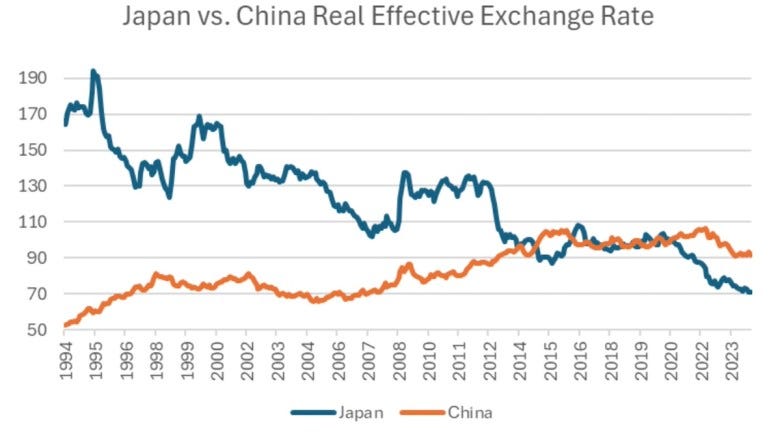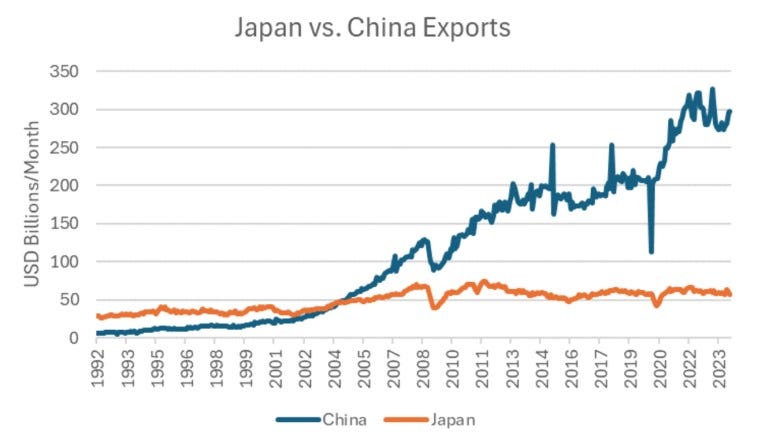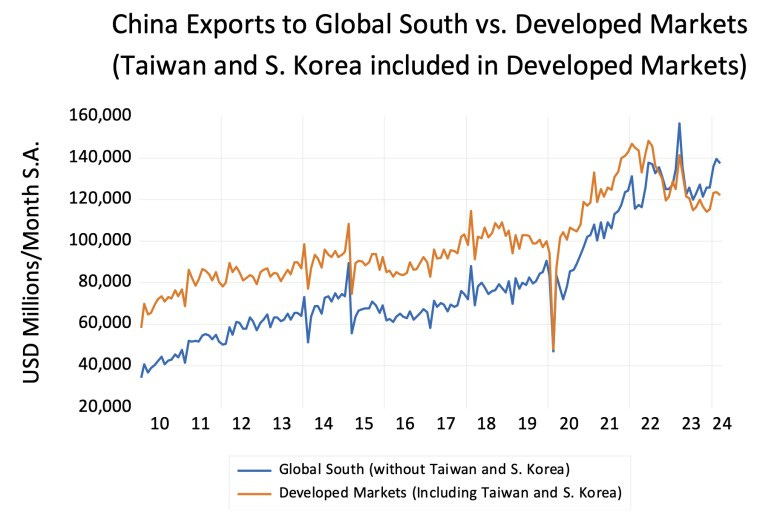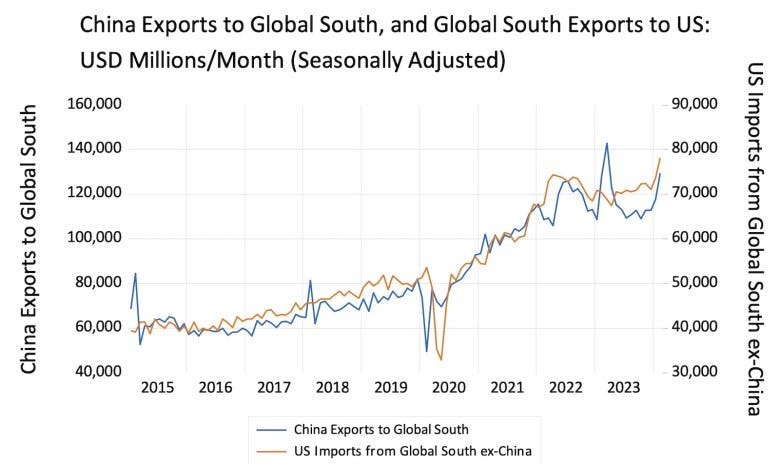Industrial Scale Panic
Debunking China’s overcapacity myth, Electric Shipping Initiatives, High EV Intensity,
Debunking China’s overcapacity myth
Data shows China’s exports are more economic miracle than deflation-driven devilry
By David P Goldman (Asia Times)
During the past four years, China shifted the preponderance of its exports to the Global South away from developed markets, and at the same time built production facilities across the Global South that re-export to developed markets—circumventing America’s 25% tariff on most Chinese goods and other developed-market trade barriers.
There must be some devilry behind China’s export achievement, according to the dark murmurings of Western economists: China is in deflation, so it’s selling goods on the cheap.
“Foreign officials worry about a repeat of the China shock of the early 2000s, when pro-market reforms in China and its entry into the World Trade Organization fueled an export boom that was a boon for consumers but crushed competing industries in the US and elsewhere,” warned the Wall Street Journal on May 4.
The yuan’s real depreciation “is clearly contributing to higher exports” from China,” said Krishna Srinivasan, director of the Asia and Pacific department at the International Monetary Fund, told the WSJ. Real depreciation means that after inflation, the currency has become cheaper.
The trouble with this argument is that China’s real effective exchange rate (its exchange rate adjusted for inflation) has risen rather than fallen, according to the Bank for International Settlements, from an index level of 50 in 1994 to a level of 90 today. It fell during the past two years but not nearly as much as the Japanese yen.
Moreover, Japan’s exports stagnated despite the sharp fall in its inflation-adjusted exchange rate, while China’s leapt. That’s an appropriate comparison because China and Japan compete directly in the world’s largest industry, namely automotive.
China exported 5.22 million passenger cars in 2023, a 57% jump from the previous year, while Japan—previously the world’s largest auto exporter—sold only 4.22 million, a 16% increase.
China’s cheap electric vehicles (EVs), including the US$9,500 BYD Seagull, fill a demand for low-cost, reliable small cars in the Global South.
Henry Ford’s Model T appeared in 1908 with a price of $850, roughly America’s per capita GDP at the time—the right price point for a mass-market vehicle. China’s EVs meet a similar price point in the Global South.
Drastic reductions in EV prices stem not from currency fluctuations but from enormous economies of scale in vehicle production. China last year installed more industrial robots than the rest of the world combined.
Ford’s $850 Model T of 1908 sold for just $250 in 1925 thanks to economies of scale. China has accomplished what Ford did in just a couple of years.
It appears that the same pattern applies to other industries. According to press reports, a Huawei 5G base station sold for $57 in 2020 but a reported sale to China Mobile last year cost just $13 per unit. Huawei does not publish price data for 5G infrastructure.
The remarkable thing is that China’s exports to developed markets haven’t moved much, while exports to the Global South doubled in the past four years:
Meanwhile, US imports from the Global South rose in tandem with China’s exports to the Global South:
It’s clear from the charts that China’s exports to the Global South have built productive capacity in low-income countries that support higher exports to the United States and other developed markets.
China, in other words, is building infrastructure and manufacturing, not simply flooding the Global South with cheap consumer goods. For poor countries with low rates of entrepreneurship, an auto is a capital good that allows small businesses to make deliveries.
In a November 2023 study for the journal American Affairs, I concluded, “An historic irony is that the Communist Party of China has fostered an unprecedented wave of entrepreneurship in the developing world, by building mobile broadband networks throughout the Global South. A notionally communist party, that is, has become the most effective propagator of capitalism on record. This conclusion is richly supported by data on broadband usage, business formation, and economic growth.”
All the available evidence indicates that China’s remarkable export performance is driven by manufacturing productivity due to investment in robotics and AI applications.
Read more here.








